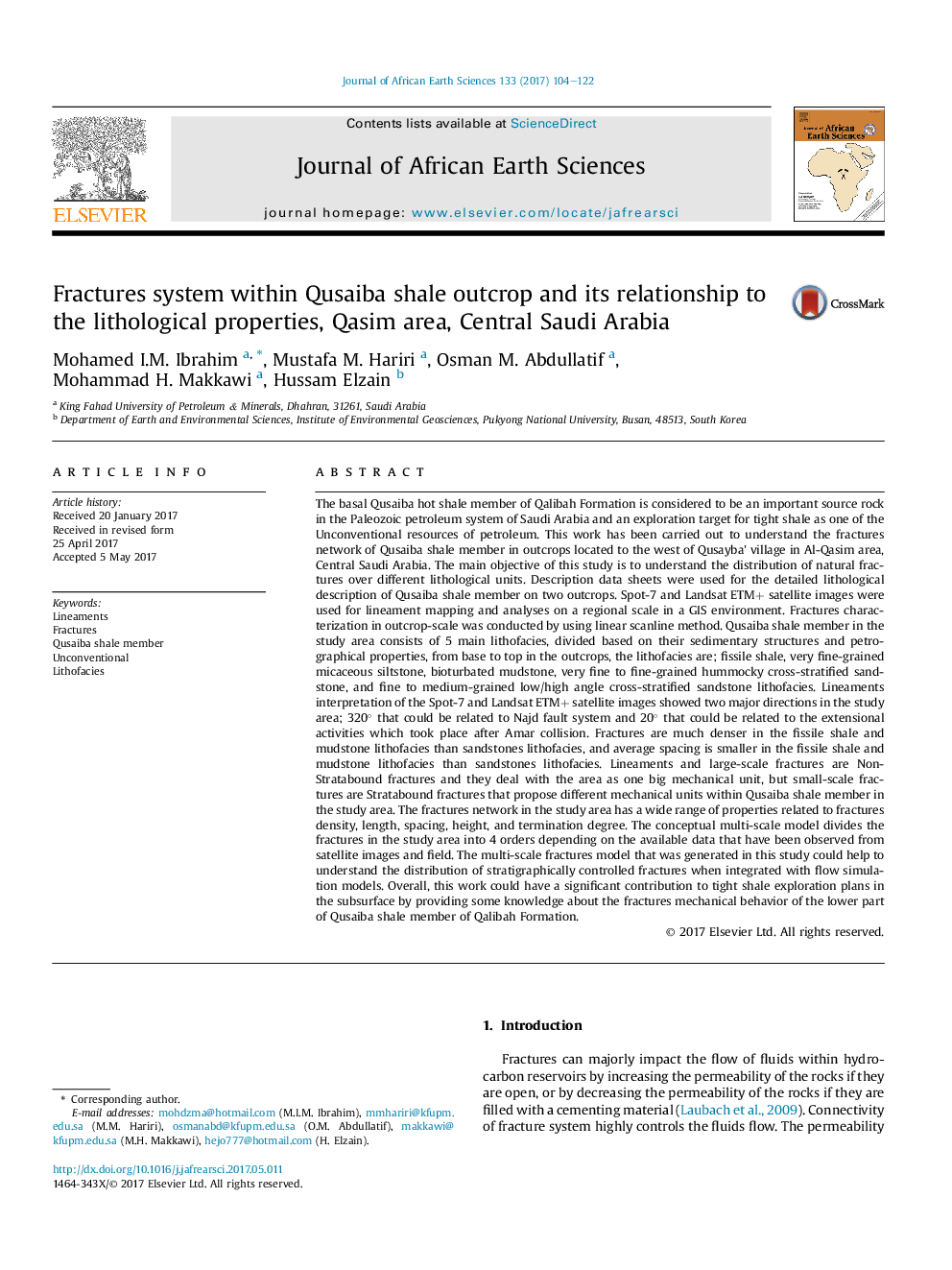| کد مقاله | کد نشریه | سال انتشار | مقاله انگلیسی | نسخه تمام متن |
|---|---|---|---|---|
| 5785528 | 1640175 | 2017 | 19 صفحه PDF | دانلود رایگان |
عنوان انگلیسی مقاله ISI
Fractures system within Qusaiba shale outcrop and its relationship to the lithological properties, Qasim area, Central Saudi Arabia
ترجمه فارسی عنوان
سیستم شکاف در تبادلات قصیبه شیله و ارتباط آن با خواص سنگ شناسی، منطقه قاسم، عربستان مرکزی
دانلود مقاله + سفارش ترجمه
دانلود مقاله ISI انگلیسی
رایگان برای ایرانیان
کلمات کلیدی
خط مقدم، شکستگی ها، عضو قصیابا شیل، غیر متعارف سنگ های قیمتی
موضوعات مرتبط
مهندسی و علوم پایه
علوم زمین و سیارات
زمین شناسی
چکیده انگلیسی
The basal Qusaiba hot shale member of Qalibah Formation is considered to be an important source rock in the Paleozoic petroleum system of Saudi Arabia and an exploration target for tight shale as one of the Unconventional resources of petroleum. This work has been carried out to understand the fractures network of Qusaiba shale member in outcrops located to the west of Qusayba' village in Al-Qasim area, Central Saudi Arabia. The main objective of this study is to understand the distribution of natural fractures over different lithological units. Description data sheets were used for the detailed lithological description of Qusaiba shale member on two outcrops. Spot-7 and Landsat ETM+ satellite images were used for lineament mapping and analyses on a regional scale in a GIS environment. Fractures characterization in outcrop-scale was conducted by using linear scanline method. Qusaiba shale member in the study area consists of 5 main lithofacies, divided based on their sedimentary structures and petrographical properties, from base to top in the outcrops, the lithofacies are; fissile shale, very fine-grained micaceous siltstone, bioturbated mudstone, very fine to fine-grained hummocky cross-stratified sandstone, and fine to medium-grained low/high angle cross-stratified sandstone lithofacies. Lineaments interpretation of the Spot-7 and Landsat ETM+ satellite images showed two major directions in the study area; 320° that could be related to Najd fault system and 20° that could be related to the extensional activities which took place after Amar collision. Fractures are much denser in the fissile shale and mudstone lithofacies than sandstones lithofacies, and average spacing is smaller in the fissile shale and mudstone lithofacies than sandstones lithofacies. Lineaments and large-scale fractures are Non-Stratabound fractures and they deal with the area as one big mechanical unit, but small-scale fractures are Stratabound fractures that propose different mechanical units within Qusaiba shale member in the study area. The fractures network in the study area has a wide range of properties related to fractures density, length, spacing, height, and termination degree. The conceptual multi-scale model divides the fractures in the study area into 4 orders depending on the available data that have been observed from satellite images and field. The multi-scale fractures model that was generated in this study could help to understand the distribution of stratigraphically controlled fractures when integrated with flow simulation models. Overall, this work could have a significant contribution to tight shale exploration plans in the subsurface by providing some knowledge about the fractures mechanical behavior of the lower part of Qusaiba shale member of Qalibah Formation.
ناشر
Database: Elsevier - ScienceDirect (ساینس دایرکت)
Journal: Journal of African Earth Sciences - Volume 133, September 2017, Pages 104-122
Journal: Journal of African Earth Sciences - Volume 133, September 2017, Pages 104-122
نویسندگان
Mohamed I.M. Ibrahim, Mustafa M. Hariri, Osman M. Abdullatif, Mohammad H. Makkawi, Hussam Elzain,
